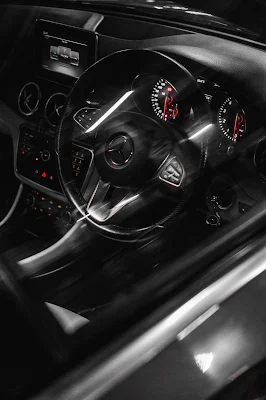The interesting questions are – what would we need from a self driving car to make it ready to become a ubiquitous part of our daily lives? For starters, a self-driving car would need a multi-purpose digital interface, which would allow it to communicate with all the cars around it and with other transport infrastructure. This could include smart traffic lights or road-signs, self-charging power stations, automated tolls, and unmanned traffic intersections.
It would also need the ability to communicate with other forms of transport infrastructure, such as railway stations, train station upgrades or even emergency vehicle dispatch. Finally, it would need a way to communicate with the human beings operating it, and be able to communicate in real-time with other smart vehicles and intelligent systems.
Let’s consider these in turn. There are already digital interfaces on all manner of vehicles. New cars come with sat nav systems which allow for information to be relayed back to a central server which determines what the best route is, and provides an accurate and constantly updated map of the area you are travelling through. Self-driving cars will also be using similar technology, so they need a way to communicate with this central server and with each other. We currently have several ways of achieving this, but for the purpose of this discussion we will consider just two: radio communication and dedicated short-range communications (DSRC). Radio communication We currently use GPS systems to provide accurate and constantly updated location information to all vehicles, which includes emergency vehicles and self-driving cars. GPS can’t “see” the environment around it, so it relies on the existence of a global network of wireless radio communication stations around the world to communicate with other vehicles. However, these stations also need to receive information from self-driving cars to know where they are in relation to one another and other road users.
Thus, there is a need for a dedicated short-range communications (DSRC) signal – and by “dedicated” we mean that no other radio communications are transmitted in this area. As well as supporting safe self-driving cars, these DSRC signals will also support many forms of transport infrastructure. DSRC technology provides a standard for transmissions from road users using the same set of physical frequencies as the radio network. Its advantages over GPS include a much wider range of available frequencies (there are 20 bands in the current DSRC standard versus four bands in GPS, for example), and with an improved ability to cope with interference from objects, including man-made radio towers. To get a sense of the potential benefits from self-driving cars, we need to consider a few challenges. First, the technology needs to be able to deal with millions of road users. Second, in a vehicle where humans are not controlling how the vehicle moves, we need to consider the likely effects of driver error. The more carefully a driver handles their vehicle and the wider the range of decisions they are able to make, the better we can ensure that other road users are able to follow their guidance. This means that our cars must be able to read what the driver is doing – whether that’s adjusting their speed, or coming to a halt – and make the appropriate response. Third, we need to ensure that this control over the vehicle is reliable. We know from experimental studies that even basic systems (such as a button press) can lead to unexpected outcomes. If the driver has not fully integrated the car’s features, this can be even more troublesome. One technology which could help solve this problem is driver behaviour monitoring (DM). It involves monitoring the physical actions of a driver to determine how they are behaving behind the wheel. DM can work because the physical and mental actions of a driver can be seen as patterns, which then need to be analysed in order to predict the actions of a driver in the future. DM technology is already available, and could be used by vehicles to infer the driver’s intention and control the vehicle accordingly.
 |
| Auto driven cars |
One of the best-known examples of DM technology is from the UK Department for Transport, where systems developed by Thatcham Research are being tested. The system uses onboard cameras to take high-quality photographs of drivers at more than 50,000 points along the motorway and use artificial intelligence to classify them and understand their driving behaviour. It then provides information about what the driver intends to do – for example, whether they intend to drive to the front of the traffic queue, or adjust the vehicle’s speed. How will we decide what is safe and what isn’t? One of the most daunting challenges facing autonomous vehicles is dealing with unexpected events. Road users often have.


.jpg)



2 Comments
Nice
ReplyDeletethank you
DeleteRegards
Faisal Hassan